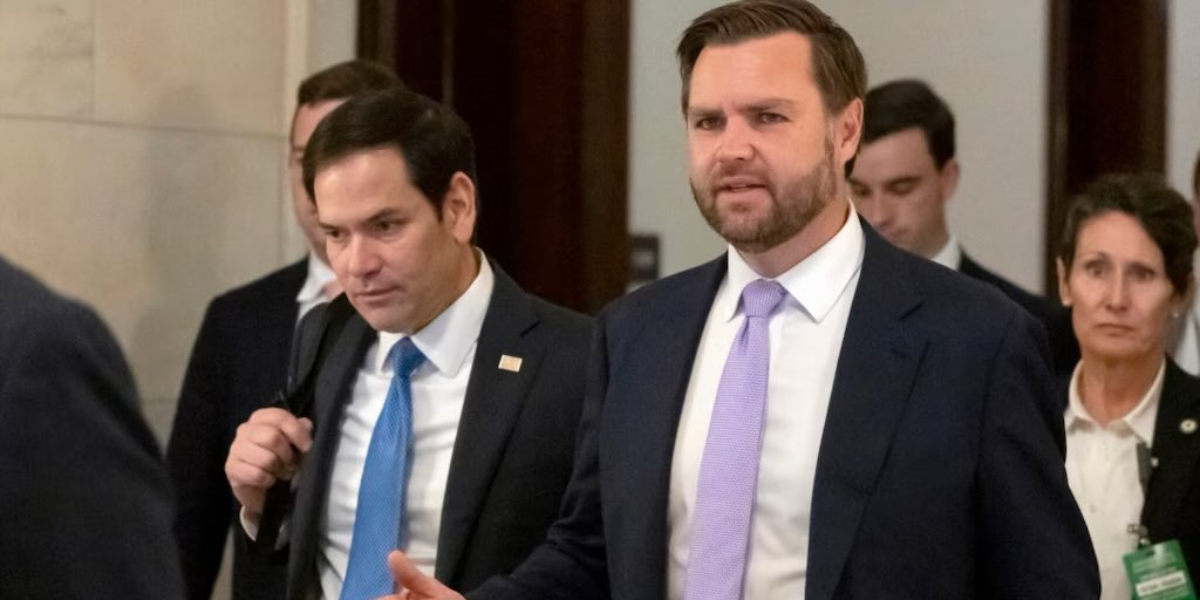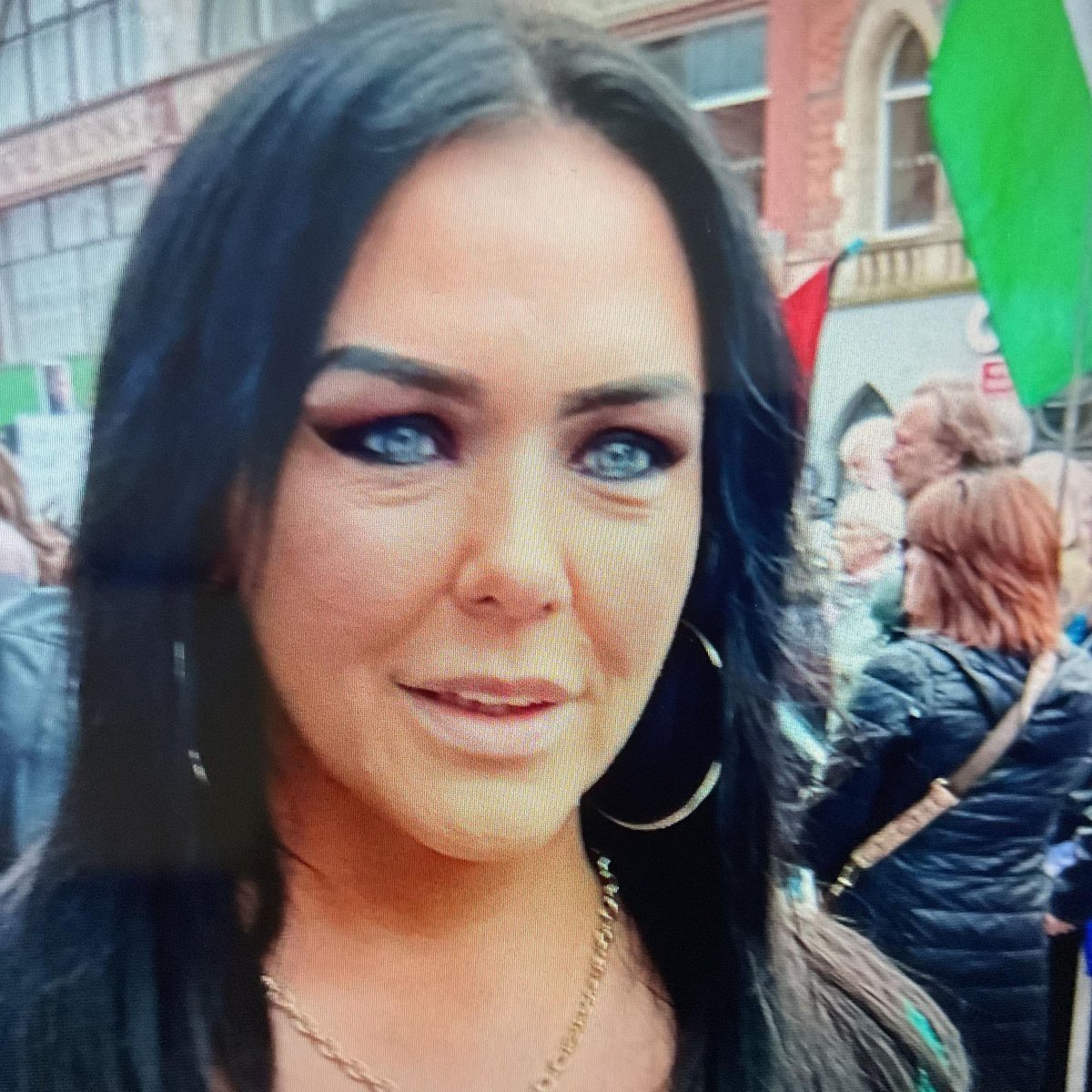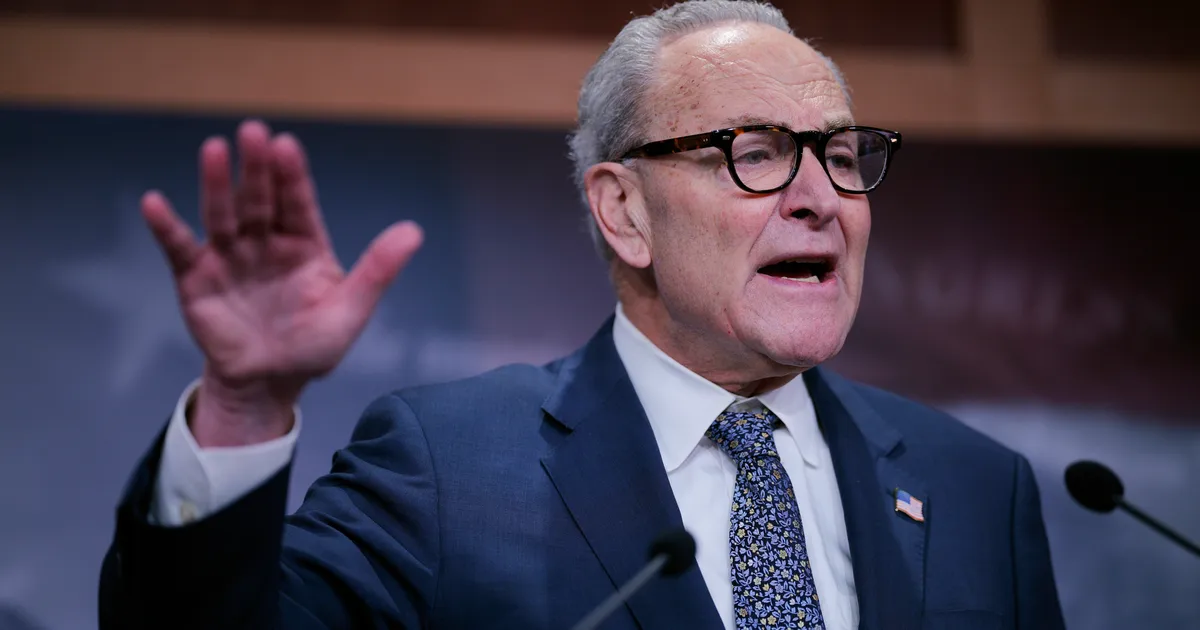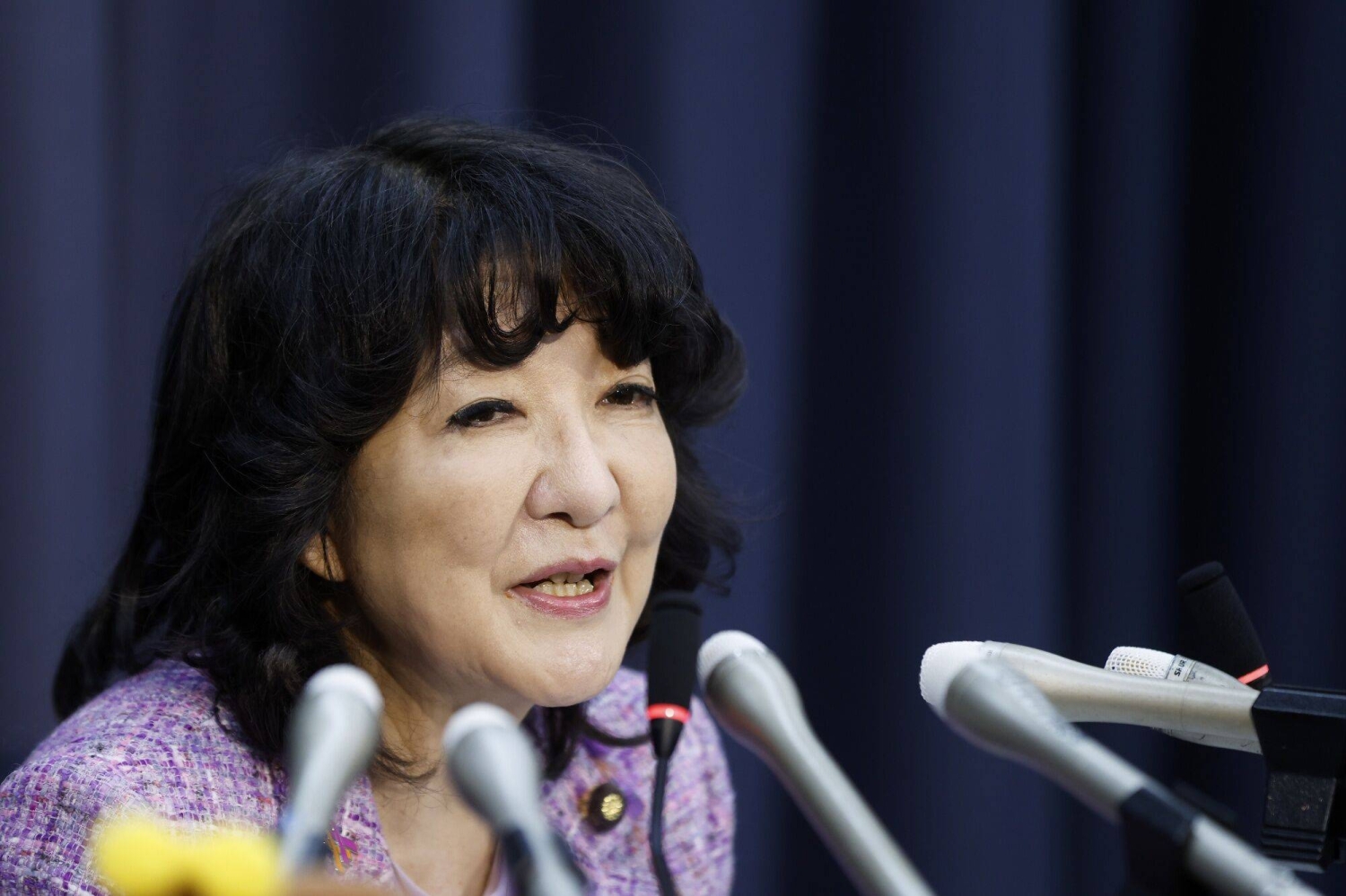Copyright Slate
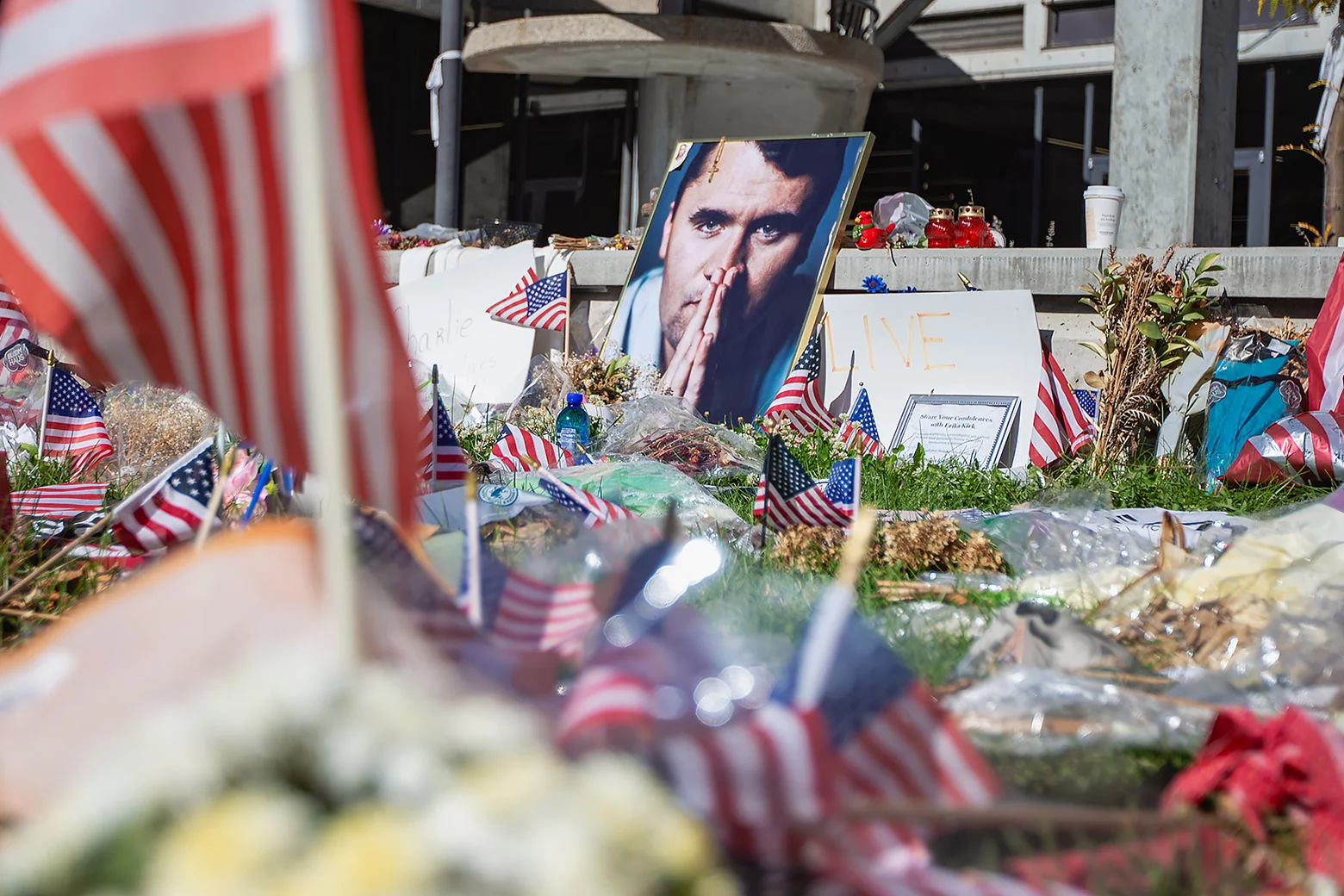
Sign up for the Slatest to get the most insightful analysis, criticism, and advice out there, delivered to your inbox daily. Niyah remembers the day in shards. At the moment when Charlie Kirk was shot, she was standing on a balcony with a clear view of his tent. She wasn’t attending as a fan. She was there to protest him. She doesn’t like it when “an influential person actively strives to take rights away from other people,” as she put it. On the day of the event, she said, she and her friends weren’t there to provoke Kirk, or to upstage him. “We just wanted him to see us,” she said. He had. She also got the attention of Kirk’s fans. “The entire crowd down there of like thousands of people started booing us and screaming at us. It was at that point that I was like, This is not safe,” she said. It wasn’t. As everyone knows by now, roughly 20 minutes into Kirk’s event, there was a sound: one sharp pop. For a moment, no one moved. Then people screamed. “The immediate pandemonium that followed was hellish,” Niyah recalled. First she crouched with other students behind the balcony railing, trying to understand what had just happened. “I thought I saw him go like this,” she said, raising her hand to her neck. “But when I watched the close-up video, he was unconscious. He was so—and his hands didn’t even go up,” she said. “I was like, ‘Oh no. Oh no, no, no.’ ” Below her, students screamed and pushed past one another. In the chaos, she noticed a man break from the crowd and race toward the balcony where she stood. He was furious. “I saw him leaning like he was about to go punch somebody,” she said. Suddenly, he was in front of her. “I could feel his breath on my face,” Niyah told me. “He was about to take a swing at me. And this angel of a woman got in between me and him, and I was like, ‘Dude, you need to back off.’ ” Utah Valley University is full of students with stories like this. They came to a campus event expecting debate, or maybe a bit of a show, and instead witnessed an assassination that shook the country. I went to the campus a month later, and the scars were clear everywhere. Their school had gone from being a relatively anonymous university to The Place Where Charlie Kirk Was Killed. In a nation whose fractured reaction to the killing remains on full display, the campus is a telling microcosm. The students I met were polite, reflective, annoyed, exhausted. Many were just trying to get through midterms, to talk about anything else. Most had either witnessed the assassination up close or knew someone who did. The unease hovered just beneath the surface. Many agreed to speak to me only anonymously, wary of how easily a casual comment here can become a public one. There was an awareness that something irreversible had shifted, and the fallout wasn’t over: Even small talk about who Charlie Kirk was carries risk. There are also the physical scars. A section of the courtyard was still fenced off, and you could almost feel some students holding their breath as they walked to class past the barricades. Meanwhile, the university was struggling with what to do with the site of Kirk’s killing. Should the space remain closed? Should there be a plaque, a tribute statue, a bench? Or should it be reopened, unmarked? That debate mirrored the national one over Kirk’s legacy: Was he a martyr for free speech or an avatar of right-wing bigotry? But here, it was supercharged by collective trauma—and it can’t end in a stalemate. Sooner or later, something will have to be done in the courtyard that’s at the center of campus life. And soon, it would be Charlie Kirk’s birthday, when he would have turned 32. The day would bring some stark clarity to what lies ahead for the school—and the country. Utah Valley University has a 100 percent acceptance rate. You apply, and almost always, you’re in. The school is located in Orem, Utah, about 40 minutes south of Salt Lake City. It’s a stunning campus, nested between the snowcapped Wasatch Mountains and Utah Lake. It’s also growing rapidly: Once a small technical college, UVU gained university status from the Utah Legislature in 2008 and has since expanded to become the largest public university in the state. Enrollment sits at around 44,000, and most students are commuters. The school’s Wolverines compete in NCAA Division I, though it lacks a football team and athletics don’t seem to define campus life. At UVU, the energy feels more like it’s a sprawling community college that grew up fast. It’s a place built for everyone. You have to visit to understand how pivotal the courtyard where Kirk was shot is to the campus. It’s the soul of UVU. At the center is an open-air amphitheater and waterfall ringed by glass buildings and shaded by well-kept trees. Students cross it constantly, cutting through between classes or to meet friends at the food court, or pausing to take in the sun on the grass. Utah’s scenic mountains frame every view. It’s hard to imagine a more peaceful setting. Or at least it was. I visited for a few days in October, a month after Kirk’s killing. The waterfall was still running, though the amphitheater the water feeds into was sealed behind a wall of steel barricades. At the center, where Kirk’s tent once stood, flowerpots were neatly arranged. Beyond them, a young couple seated on a bench obliviously kissed each other. Another student glided past on a longboard. Others hurried across the lawn, backpacks bouncing. Even the armed police officer stationed in the courtyard—a presence the university added to reassure students returning to campus—joined the quiet rhythm of the day, smiling as he unwrapped his lunch beneath the crisp fall sun. Kirk’s appearance had been controversial from the start. A petition circulating on campus carried nearly 1,000 signatures, arguing Kirk’s presence would “stand in contrast to the values of understanding, acceptance, and progress that many hold dear.” It’s not difficult to find examples of what they meant. Kirk was invited anyway. Hundreds of students and visitors came to listen to him debate and discuss everything from which basketball player is the greatest to the finer differences between Mormons and evangelical Christians. Then, in the middle of answering a question about trans mass shooters and gun violence, Kirk was shot in the neck, blood running onto his white shirt. Those outside barely had time to think, they told me. Mark Ellison, a married student who’d brought his wife and 1-year-old son to hear Kirk speak, said, “At first, I thought it was firecrackers. Then I saw people running, and realized he’d been shot. I just grabbed my son and ran.” Later, he found a video of himself sprinting out of the courtyard, shouting for his wife. Everyone who was on campus that day has a story. They’ll tell you about the crowd rushing away from the courtyard, of people with blood on them, of mass confusion over what had just happened. Multiple students talked of fights breaking out in the immediate aftermath, a preview of what was to come. As one student who’d been standing beside the tent put it: “People started running and screaming. I didn’t even know what was happening at first. It was just chaos everywhere.” Then there are the people who were in the university’s chapter of Turning Point USA, which organized the event. Jeb Jacobi still dreams about it. “I was about 10 feet away,” he told me. “I saw his face after he collapsed.” “That’s something that you’re kind of going to have to live with for the rest of your life.” Jacobi had volunteered to help bring Kirk to campus. I met him in the food court within eyeline of where it all happened. Jeb said he still walks by often, even when he doesn’t plan to. “I was proud that we got him here,” he said. The event had felt like a milestone for him as a communications student with his first chance to volunteer for a national figure he’d followed online for years. When the shot rang out, he said, “I heard it and everyone got down. I got up a little bit higher, and that was when I was like, Was that a firecracker?” Then he saw Kirk slump in his seat. “His eyes were shut. His body was limp. He had blood all down the side of his shirt and down his neck.” After the chaos, Jeb called his family, his voice shaking. “I called my aunt and said, ‘Charlie Kirk has been shot.’ She said, ‘What are you talking about?’ I said, ‘There’s been a shooting on campus.’ ” Later, he said, “I just remember going home and sobbing. Like, sobbing in the shower.” In the weeks that followed, he met with national news reporters, including from NPR, NewsNation, and 60 Minutes. “My parents were like, ‘Don’t do interviews,’ ” he said. “And I said, ‘No, no, no, I’m gonna do the interview.’ It was probably one of the most important interviews that I’ve ever done in my life.” The national attention came with a price. Jeb told me he’d become a target online—called a “crisis actor,” his name dissected by conspiracy theorists looking for hidden meaning. His family urged him to stay quiet, but he couldn’t. “I post about it,” he said. “I want people to know I was there.” The cruelty stung most when it came from people around him. Once, he overheard someone joke about Kirk and had to stop himself from reacting. Another time, a friend handed him a flyer for a protest against a memorial. “I just ripped it in half,” he said. “I don’t want to see that.” He said the memorial events have given him comfort. He sees what happened as a “turning point for America.” “This is a cultural shift,” he said. “The next few months are really going to show what direction America is shifting into.” For Jeb, the courtyard remains “sanctified in a way,” he said. “There needs to be a memorial for him,” he said. “It’s a historic site. In some ways, this kind of compares to Sandy Hook or Columbine. Like, they’ve got memorials for the people that died there. We need to have a memorial for Charlie. It’s the same thing.” On Oct. 14, on what would have been Kirk’s birthday, I was about 40 miles north of Utah Valley University at the marbled state Capitol’s rotunda in Salt Lake City. Inside, beneath the ornate dome, hundreds of people sat for programming that included speeches from both students and Republican representatives. Most in attendance were students, dressed as if for Sunday service. Volunteers at the door handed out white T-shirts printed with a single word in black letters: FREEDOM. It was the same as the shirt Kirk was wearing when he was shot. The governor had declared it Charlie Kirk Day. Earlier that afternoon, President Donald Trump posthumously awarded Kirk the Presidential Medal of Freedom, the nation’s highest civilian honor. What was happening here in Utah was part memorial, part coronation. From the front row, the students from Brigham Young University’s Turning Point USA chapter held their shirts high when Rep. Mike Kennedy told them to “continue the fight for freedom.” He urged them to get married and start families. Utah House Speaker Mike Schultz followed, saying, “the strength of America has never started in Washington, D.C., but in families and churches.” Aubree Hudson, president of Brigham Young University’s chapter of Turning Point USA, took the podium next. “We live in a time when truth is under attack,” she said. “He believed in you. He fought for you. Tonight, we’re picking up his mic. It’s our turn.” I spotted Jacobi sitting quietly among his friends, hands clasped in his lap. Later, he told me it was the first time he’d cried in public since the shooting. “It really meant a lot,” he said. “It was beautiful.” Republican leaders have been open about their desire to leverage Kirk’s killing into a political realignment, especially for young people. That impulse was on full display in the Capitol. That was particularly true when Rep. Brandon Gill took the stage to close the event with a speech ill-suited to a memorial but perfect for a right-wing rally. Gill, 31, is the youngest Republican member of Congress, elected to represent Texas’ 26th District starting this year, and is considered a rising force in the GOP. Onstage in Utah, he said Kirk “died defending free speech. Now it’s up to us to take our country back.” He addressed the students in the crowd. The country, he said, had been overtaken. “We’ve watched the left take over virtually every single facet of civil society,” he declared. “You guys grew up in a country where some of the weirdest perversions were shoved in your face from the time you were young—in school, on TV, everywhere.” He called Kirk’s killing part of “the rise of political violence from the left,” warning that it wasn’t an isolated act but evidence of a broader sickness. “Twenty-five percent of people who identify as very liberal say political violence can sometimes be justified,” he said. “That’s a systemic problem on the left,” he said, which he described as having “an affinity for violence.” And then he said something that caught me off guard: “Your classmates hold diametrically opposed world views. Totally incompatible,” he told the crowd. He urged them to debate and challenge them as a way to “take our country back, just like Charlie Kirk did, no matter what it cost.” The line undercut any sense of healing, of community, of stepping back from the precipice of a new, even more violent era of U.S. politics. It was instead a sitting congressman exhorting these students—many of whom had just lived through a shooting—to confront their peers on campus. It was clear that for Gill and his ilk, there was no healing to be had here. The room erupted. There was another memorial that day. Back on the northwestern edge of the UVU campus, about 1,500 feet from the fenced-off courtyard, a small group of students sat in a loose circle with a guitar and a tub of bubble wands on the grass, marking a different kind of memorial. It began with Jack and Harper—students who had waved a pride flag with Niyah on the balcony above Kirk’s tent and the crowd gathered below. A few weeks before the shooting, they’d watched a man with a megaphone shout anti-gay and racist insults for hours while campus police, as Harper put it, “shook his hand and left.” They complained to administrators, only to be told, “It’s a public university—free speech.” When Kirk’s event was announced, Harper signed the petition to cancel it. “I just knew something was going to happen,” Harper said. After the shooting, people blamed them. “It was our fault,” Harper told me. The accusation left them spiraling. “All the doomscrolling, the depression—it just sent me under. I needed something that didn’t feel helpless.”She hasn’t gone back to the courtyard since the shooting. “It’s changed,” she said quietly. “I avoid that area completely.” So Harper and Jack started what they half-jokingly called the “Civil Disobedience Club.” They mixed bubble solution in Harper’s kitchen and brought it, along with a whiteboard and a stack of flyers, to the lawn outside the library. “The library can’t even afford to stay open past 10,” Jack said, “but we’re supposed to build a shrine for this guy?” By the second week, the signup sheet—along with being smudged with soap—had nearly 60 names. “It’s just a space to decompress without pretending everything’s fine,” Harper said. Among those who found the circle was Lucy, a freshman trans woman who had wandered past on her way to class and stayed. She used to study by the waterfall in the courtyard before it was fenced off. “I liked sitting by the trees and watching the bugs crawl through the grass,” she said. “It was peaceful. Now there’s this sour despair that hangs over it, especially with the monument over there.” For Lucy, the university’s effort to honor Kirk misses something essential. “It’s very much voicing their support and leaving tangible evidence toward a person that doesn’t want somebody like me to really exist,” she said. Her voice didn’t rise in anger. “It saddens me to see how much celebration there’s been—especially on a campus that advertises itself as a place where you should feel safe to be you.” Nearby, another student stretched out on the grass, eyes half-closed behind sunglasses, listening to the music. He told me he hadn’t liked Kirk either—“he said things that drove people apart more than they brought people together”—but the shooting left him uneasy in a different way. “There’s that lingering fear of more political violence,” he said. “I’m glad there’s extra police here—which both makes it feel more safe and unsafe.” He watched a group of students as they dipped wands into a bucket of soap and raised them to the breeze. “People think it’s just two sides,” he said finally, watching a bubble drift toward the flags. “It’s so much more complicated.” The university had tried. Classes were canceled for a week. When students came back, the courtyard was lined with flowers, chalk messages, and signs calling it “sacred ground.” Counselors offered drop-in sessions. Therapy dogs and alpacas named Mac and Cheese brought excitement to the lawns. Students were given free massages, snacks, and access to wellness programs. “They’re really trying to make it comfortable for us,” one student told me. But for students like Lucy—and for Jack and Harper, who’d already felt unsafe long before the shooting—those gestures couldn’t reach the part of campus that still felt unwelcoming. When I asked Niyah how she felt about the university’s efforts to help everyone heal, she paused. “I don’t think they mean us.” In the days after what would have been Kirk’s birthday, I kept walking the paths between classes, stopping students the way I did when I’d first arrived and just asking what it feels like to be here now. Some didn’t want to talk. Others did. A business major told me things felt “pretty much back to normal.” A psychology student said she still checks every exit when she walks into a classroom and will never again feel safe in a large crowd. In the food court, two freshmen debated whether the university had overreacted with the new police patrols and K-9 unit. “If anything,” one said, “it feels less safe.” Another student jogged past the barricades around the courtyard where Kirk was shot. When I called out, they pulled an earbud halfway out and said, “Sorry, I just have to get to class.” That line stayed with me when I spoke to Gregory Rogers, a criminal-justice lecturer and former FBI agent who’s been trying to turn the assassination into a teachable moment. For weeks he’s been fielding questions from anxious students, reminding them that “it was never truly safe. No open campus is.” We talked about the courtyard and what should happen to it. “You don’t want to remind them every day that something horrible happened,” he said. “But you can’t erase it, either.” The university has set up a commission to decide. It’s made up of a mix of students, faculty, and administrators weighing whether to reopen the courtyard, keep it fenced off, or mark it with something permanent like a plaque, a debate table, or a statue. No one seems to know what kind of memorial, if any, could be tolerable to everyone. Outside Rogers’ office, the campus was already moving again. Students streamed past the flowers and flags, backpacks on, faces down in their phones. Whatever the commission decides, UVU now feels split between two versions of itself: one that wants to remember and one that wants to forget. But on a campus that’s home to both Niyahs and Jebs, there may be no outcome that feels just. That afternoon, I found Bryan, a sophomore from New Jersey, sitting on a concrete bench in the courtyard. His phone was in his hand—the same one he’d used to film the shooting. He told me he’d been standing about 20 feet away when the shot rang out. “I put it on TikTok,” he said. “And then they just took it down.” By then, though, the clip had already been downloaded and reuploaded by other users, spreading across social media. His friend, a Kirk supporter, texted him almost immediately: “Dude, no fucking way that actually just happened.” Bryan said it still didn’t feel real, even though he filmed it himself. “It didn’t feel like I was there, you know?” he said. “Mostly I’ve just been arguing with people on TikTok. It’s already kind of gone back to normal for me.” A month later, he walks through the courtyard the same way he always has. “It’s weird,” he said. “I come through here for class, and it’s like nothing stopped. People just kept coming.” He wasn’t sitting there to remember anything. He was waiting for an adviser who’d asked to meet him about an assignment. The fountain hummed beside him while students streamed past the gate—laughing, scrolling, carrying coffee, stubbornly keeping going.
